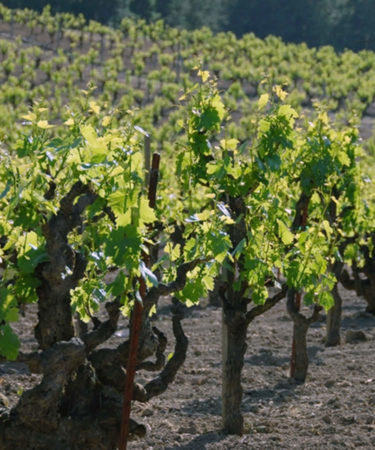Like Disneyland, Silicon Valley, and traffic on the 405, old-vine Zinfandel is a California institution. For fans of the big and bold wine, those three words not only represent an easy-drinking style of wine, they also celebrate an important part of American winemaking heritage.
It might be surprising, then, to learn that labeling a Zinfandel “old vine” is actually 100 percent meaningless.
The Alcohol and Tobacco Tax and Trade Bureau (TTB) dictates the information wineries can and lawfully must include on wine labels. There are regulations surrounding: brand name; bottler’s name and address; grape variety; appellation; alcohol content; vintage date; net volume; sulfite declaration; and official health warning (though not all of these categories have to be included by law).
When it comes to the inclusion of the term “old vine,” however, there are no laws. The TTB tried to address this issue in 2010, but, like the TTB, vintners don’t have a clearly defined age at which a vine becomes “old” (though most would agree that plants between 50 and 100 years old might qualify). The issue died on the vine.
Old vines are desirable because they produce a lower quantity of fruit than those in their youth, resulting in more concentrated and flavorful grapes. Zinfandel, in particular, offers notably high yields at a younger age. One advantage it does have, however, is the ability to continue producing decent quantities well past 100 years of age.
With lower yields comes a relative increase in cost to the winery, which now produces a lower volume of wine per area of vines planted. In this instance, therefore, it is advantageous to include the term “old vine” because it implies an elevated cost but high-quality fruit.
But given the lack of legislation surrounding the labeling term, it’s conceivable that producers of mass-market Zinfandel could use fruit from younger vines but still label their products “old vine.” This would allow them to produce a greater volume of cheaper wine, yet call it the same thing as those using lower-production centenarians.
Finding out just how prevalent this practice is, however, is a tricky business.
Zinfandel vines are believed to have first arrived in California with prospectors moving west during the Gold Rush of the early- to mid-19th century. Some of the vines planted during this period survive to this day. But the remainder of the 44,446 acres of Zinfandel vines planted in the state are made up of vines that have been replanted over time — and can still be considered old, though they might be closer to 50 than 100 years of age — as well younger, more bountiful vines.
To this day, there are no official figures outlining the percentages of different ages of Zinfandel vines planted in California.
To help avoid confusion, many wineries that are famously associated with old-vine Zinfandel have sections on their websites outlining the age of their vines, and often a backstory describing how they came to acquire the plot.
Take Ravenswood, the self-proclaimed “most influential Zinfandel producer in the New World.” Though the company itself doesn’t own the vineyards in which its grapes are grown, it goes to great lengths to detail the age of the vines in each of the vineyards from which grapes are sourced.
One of the properties from which Ravenswood buys grapes is Sonoma County’s Barricia Vineyard, about which Ravenswood states: “6 acres Zinfandel planted before 1892, 4 acres Zinfandel planted in 1995, 2 acres Petite Sirah planted in 1998.”
Other “old vine” Zinfandel producers are less forthcoming. That doesn’t necessarily mean that their wines are not made with grapes from aged vines — they might be, even if just partially — but there is no guarantee.
One such winery is Twisted, which mentions everything from alcohol content to total acidity and pH level on the tech sheet for its “old-vine” Zinfandel, but says nothing of the vines on which the grapes were grown. Then there’s Bogle, which notes a vineyard age of “60 – 80 years old” for its “old vine” wine. Yet just because a vineyard is 80 years old doesn’t mean that any or all of its vines are that old.
Ultimately, it comes down to precisely what “old vine” means to us, the wine-buying collective. If you purchase an old-vine Zinfandel expecting a certain style of wine, and it tastes just so, finding out that the bunches were plucked from recently planted vines shouldn’t really make a difference. Until laws change, follow your nose (and palate) to what you love.
